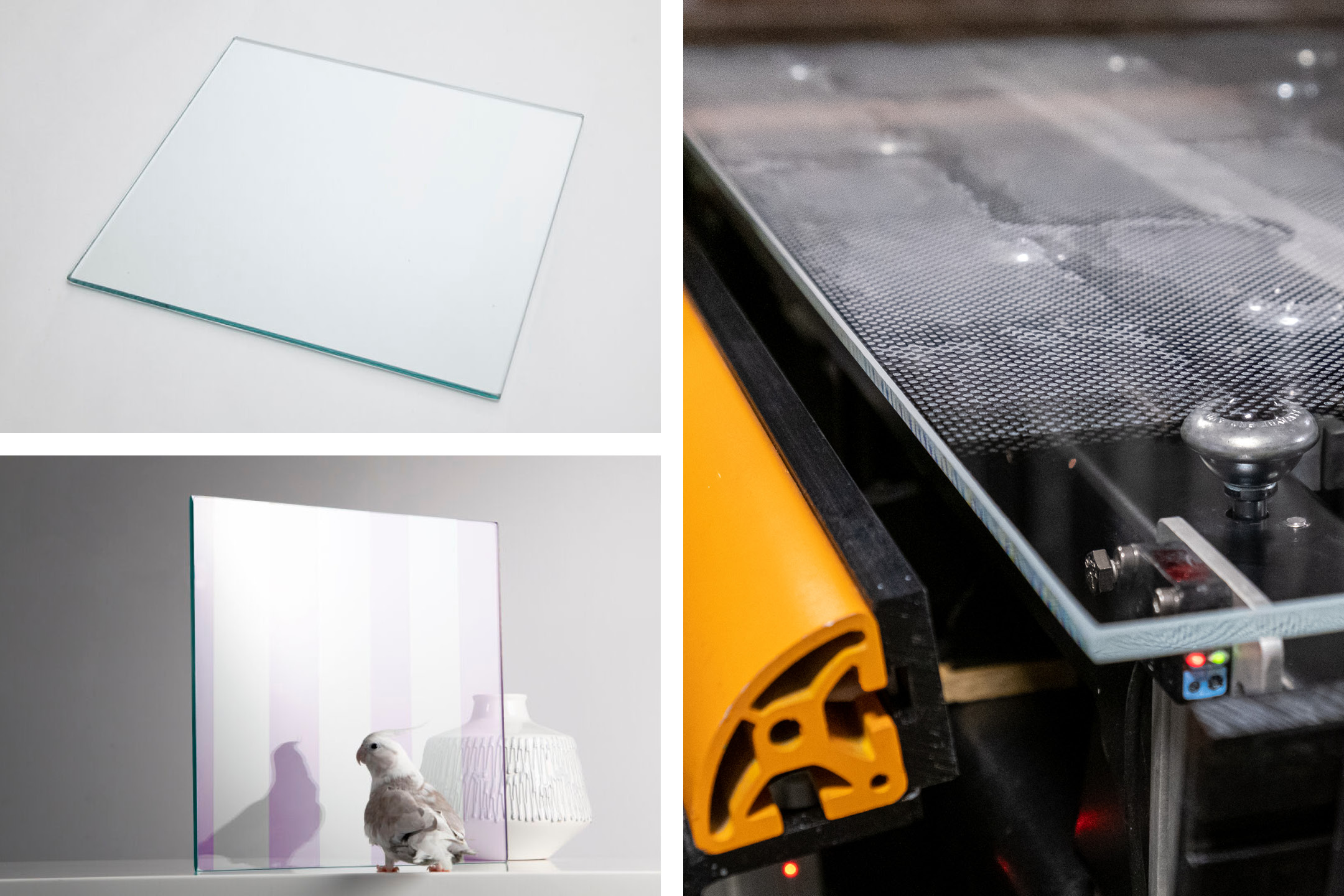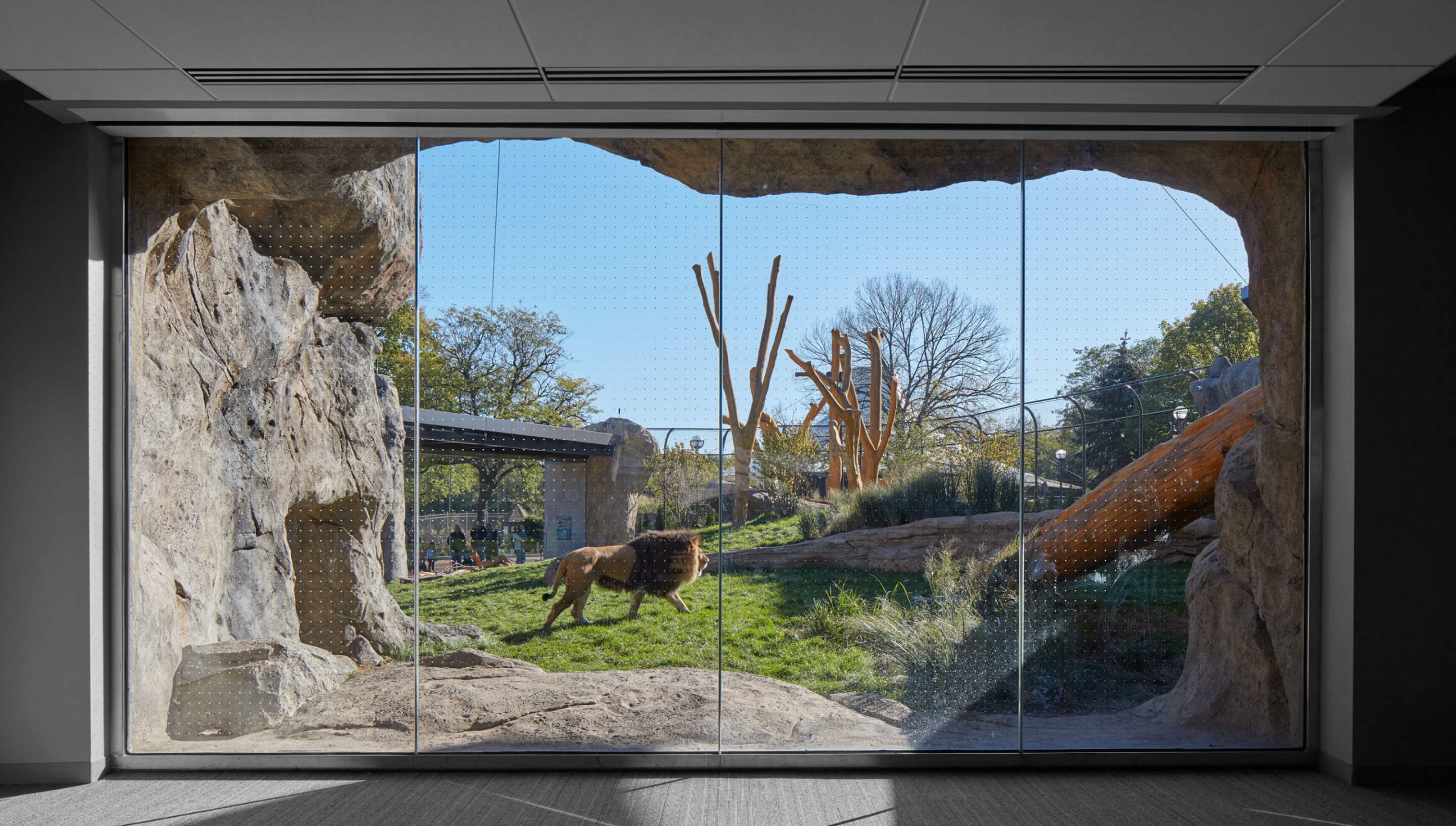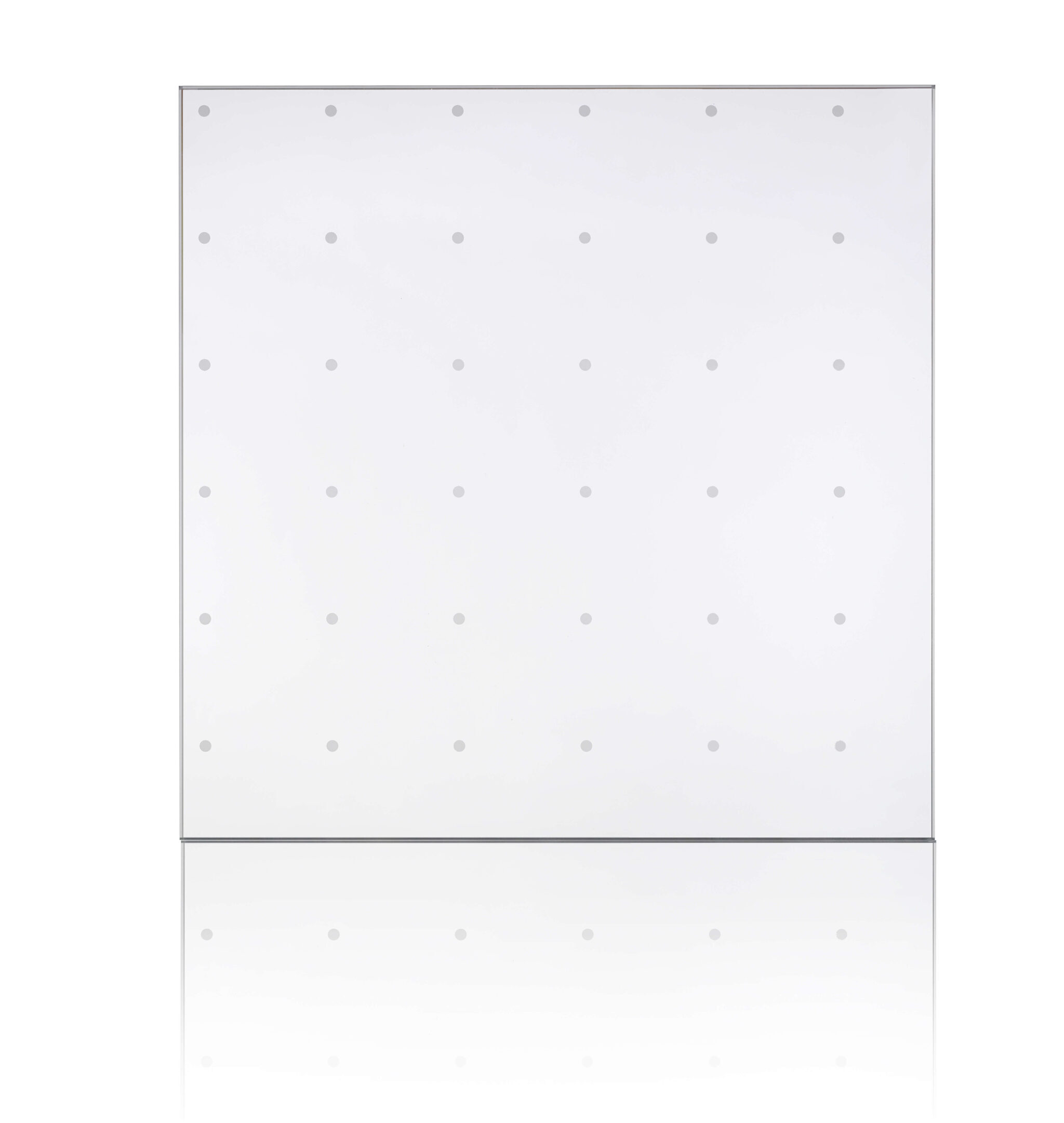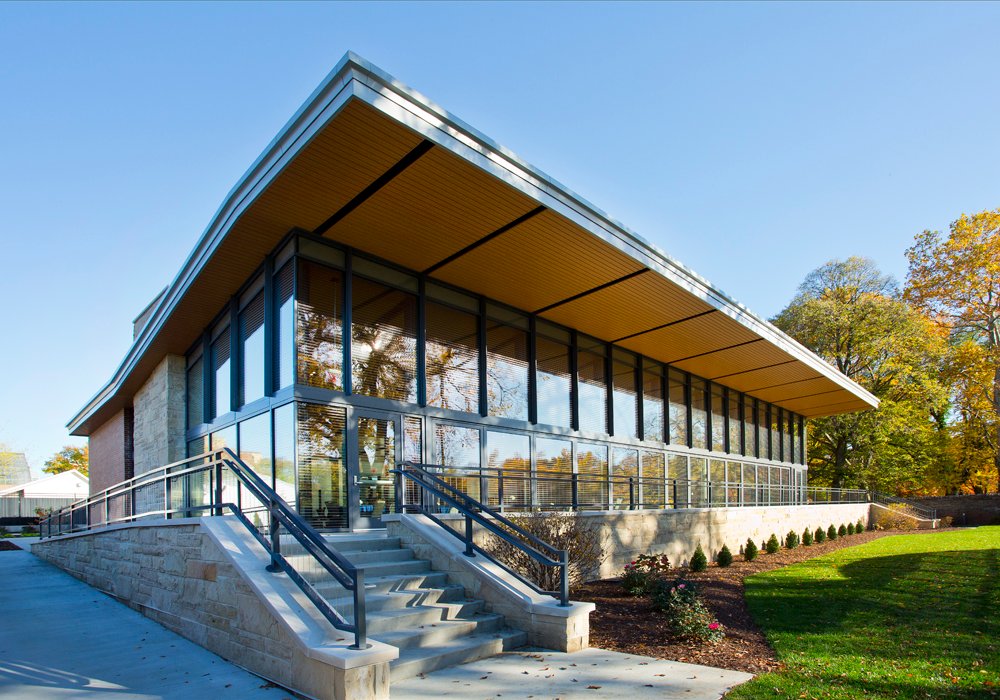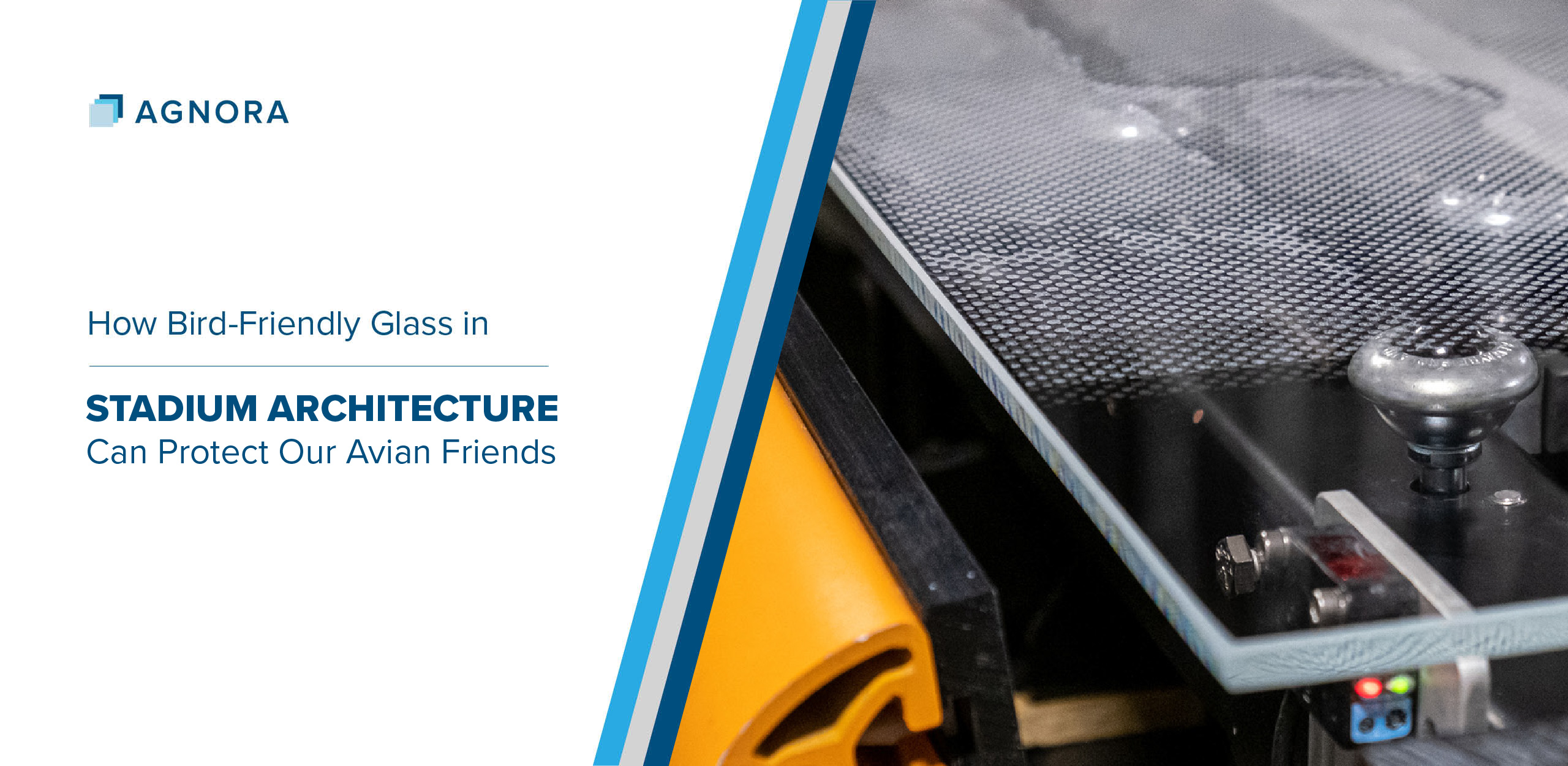
June 1, 2025
The Duty of Preservation in Stadium Architecture
For birds, sudden encounters with transparent walls can shatter more than just their peaceful flight. The American Bird Conservancy estimates that up to a billion birds fall victim to building collisions annually in the U.S. Alone. Collisions with glass, commonly due to the bird’s inability to perceive reflections and transparency, pose a significant threat to avian wildlife around the world.
Bird-friendly glass is not just a fad or a luxury but an essential component of ethically sound design. Its installation effectively protects avian species from preventable harm while also serving as a poignant statement about the commitment of stadiums to conservation. In this comprehensive guide, we will explore the nuances and advantages of integrating bird-friendly glass in stadium architecture, ensuring a safer flight for our feathered guests.
Understanding and Selecting Bird-Friendly Glass
What is Bird-Friendly Glass?
Bird-friendly glass, a product of environmental consciousness, is specifically designed to mitigate bird collisions. It achieves this through various techniques such as adding patterns through acid etch coatings, ceramic digital printing, or UV-reflective coatings to the glass. These elements break up the reflective and clear surfaces, making them more visible to birds and reducing the risk of fatal strikes.
The Impact on Bird Safety and Conservation
The implications of bird-friendly glass extend far beyond mere hazard avoidance. By reducing collisions, stadiums actively contribute to the conservation of bird species, impacting local ecosystems positively. With this architectural shift, stadiums are not only saving the lives of individual birds but also making strides towards the preservation of avian diversity.
Benefits of Bird-Friendly Glass Within Stadium Architecture
Prevention of Bird Collisions in Fly-Through Zones
Innovative stadium designs often include what are known as fly through conditions, such as a glass or window only corner with no visual markers. This openness can lead to accidents, as birds often mistake transparent barriers for open passages. Bird-friendly glass serves as a visual barrier without impeding the enjoyment of visitors or the well-being of the birds, ensuring that flight zones remain safe.
Enhancing Visitor Experience Through Reduced Collisions
Collisions, when they occur, can be distressing for both visitors and staff. By preventing these incidents, bird-friendly glass fosters a more thrillign stadium environment. Guests can enjoy a seamless viewing experience, undisturbed by the uncomfortable sight of a potential collision.
Environmental Sustainability and Ecosystem Preservation
Each bird saved from a collision is a triumph for the local ecosystem. The use of bird-friendly glass can be a significant step in conserving vulnerable bird populations. By fostering an environment where humans and birds coexist harmoniously, stadiums can set a standard for environmentally aware architecture.
Delving Into Design Considerations
Glass Types and Patterns
There is a variety of glass types and patterns suited to different architectural styles and bird habits. For instance, fritted glass features small ceramic dots or lines that disrupt the glass’s surface, offering an effective solution in areas with a high incidence of bird strikes. Most commonly, these are arranged in a 2×2″, 2×4″, or 4×4″ pattern with varying degrees of threat avoidance. The most common being the 4×4″ pattern which allows for a more pleasurable viewing experience for visitors and maintains a relatively good threat factor, between 25-30 (or 25% risk of collision). The benefit of physical patterns is the ability to get glass up to 130″ x 300″ in size – the largest in North America.
Alternatively, UV coating can be used. These achieve the same threat factor but are invisible to humans. The drawback is overall cost and size, topping out at a width of 104″ in height.
Architects can choose from these patterns and more, customising their designs to provide optimal protection while maintaining aesthetic appeal.
Integration with Landscaping and Stadium Structures
Seamless integration of bird-friendly glass within the broader landscape is critical. Thoughtful placement, such as within the natural canopy of trees or as part of a structure that mimics the local environment, ensures that the glass is effective both functionally and visually. Collaborations between architects and landscape designers can yield innovative solutions that blend form and function.
Compliance with Regulations and Standards
Regional guidelines vary greatly; most standards exist for low-rise residential, municipal and commercial buildings. Ensuring that bird-friendly glass installations meet these requirements is essential, not only for legal reasons but also to guarantee that the glass will perform as expected in preventing bird collisions.
Tying It All Together
The Collective Call to Action
The adoption of bird-friendly glass in stadium architecture symbolises a broader call to action for the architectural community. By choosing to prioritise the lives and well-being of birds, architects and stadium managers not only ensure the survival of avian wildlife but also craft a legacy of conscientious design. .
Encouraging a Continual Conversation
The conversation about bird-friendly glass should not end with this article but continue to evolve. Architects, stadium managers, and stakeholders must engage in ongoing discussions to refine best practices and encourage the widespread adoption of bird-friendly strategies. The collective effort to protect birds through bird-friendly glass serves as a testament to the power of architecture to inspire change and harmonize with nature.
In the coming years, we may witness a transformation in the relationship between avian wildlife and human-built environments—a transformation where the beauty of birdsong is not marred by the tragedy of collision, and the shared skies are truly safe for all creatures. It begins with a clear pane of glass—bird-friendly and forward-thinking—reflecting our commitment to conservation, sustainability, and compassion.
